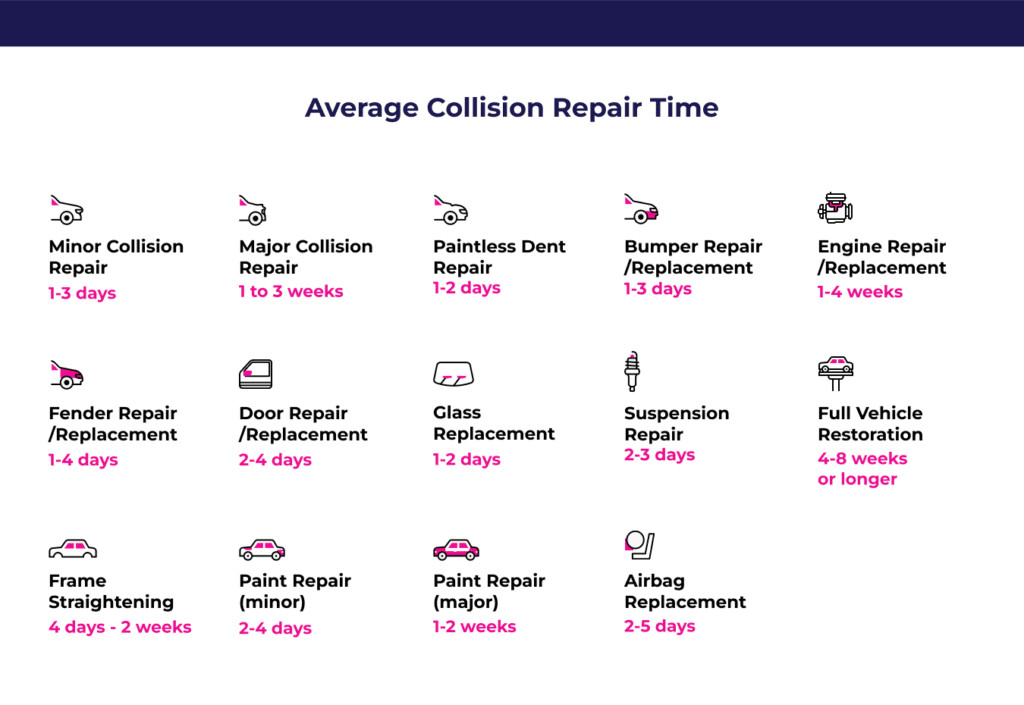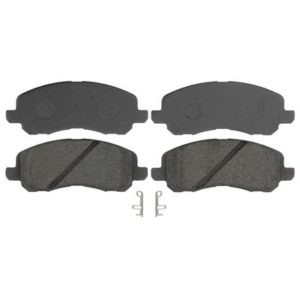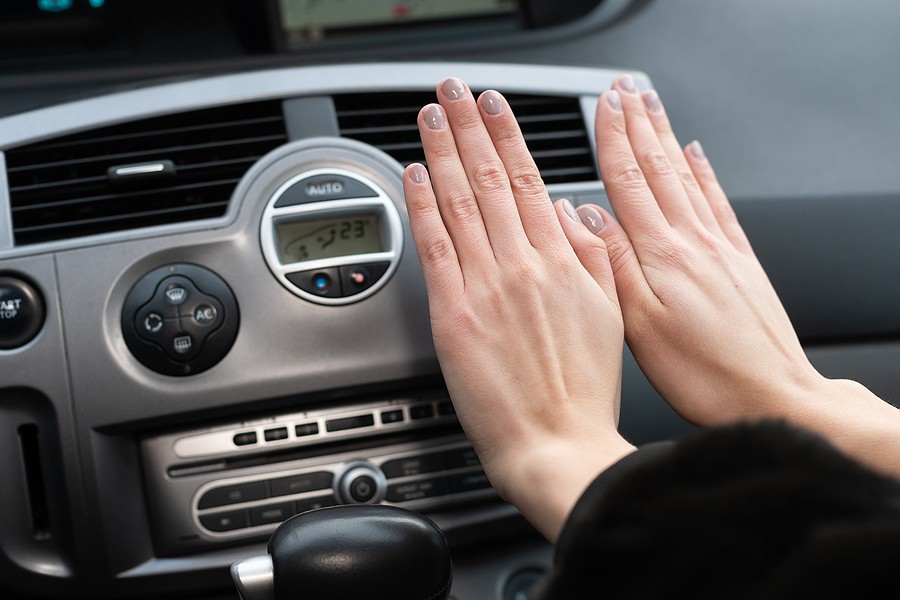How Much To Fix Bubbling Paint On Car: Costs And Solutions
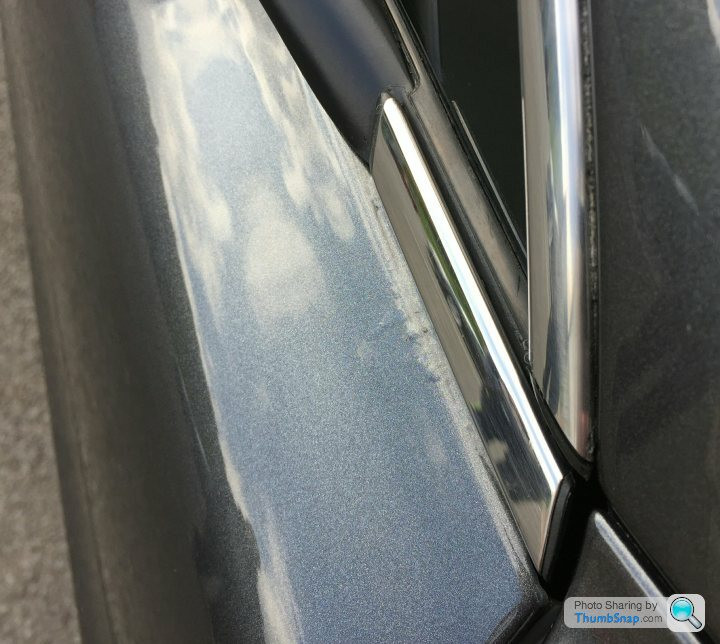
Bubbling paint on your car is more than just an eyesore; it’s a sign of underlying issues that, if left unaddressed, can lead to more significant damage. This comprehensive guide from CARDIAGTECH.NET will delve into the causes of bubbling paint, explore various repair options, and provide a detailed breakdown of the costs involved. We aim to equip you with the knowledge to make informed decisions and restore your car’s finish to its former glory.
1. Understanding the Culprit: What Causes Bubbling Paint?
Several factors can contribute to bubbling paint on your car. Identifying the root cause is crucial for effective and lasting repair.
1.1. Rust: The Prime Suspect
Rust is a common cause of paint bubbles. When rust forms beneath the paint layer, it expands, pushing the paint outwards and creating blisters. This often occurs in areas prone to moisture and road salt exposure, such as:
- Lower body panels: These are constantly bombarded with road debris and water.
- Wheel wells: These areas trap moisture and are susceptible to salt damage.
- Seams and joints: These are vulnerable points where moisture can penetrate.
1.2. Moisture Entrapment
Moisture can become trapped beneath the paint film due to improper surface preparation or application techniques. This trapped moisture can lead to:
- Poor adhesion: The paint doesn’t bond properly to the surface.
- Blistering: The moisture expands and pushes the paint outwards.
- Delamination: The paint separates from the underlying surface.
1.3. Contamination Issues
Contaminants like oil, wax, or silicone can interfere with paint adhesion, leading to bubbling. These contaminants can be introduced during:
- Improper cleaning: The surface isn’t thoroughly cleaned before painting.
- Using incompatible products: Using waxes or polishes that contain silicone before painting.
- Environmental factors: Airborne contaminants settling on the surface during painting.
1.4. Poor Paint Application
Incorrect paint application techniques can also cause bubbles to form. Common issues include:
- Applying paint too thickly: This can trap solvents and create bubbles as they evaporate.
- Improper drying times: Not allowing sufficient drying time between coats.
- Using the wrong type of primer: The primer may not be compatible with the topcoat.
1.5. Chemical Reactions
In some cases, chemical reactions between different paint layers or between the paint and the underlying surface can produce gases that cause bubbling. This can occur when:
- Incompatible paints are used: Different types of paint may react with each other.
- The paint reacts with the substrate: The paint may not be suitable for the material it’s applied to.
2. Assessing the Damage: How Severe Is the Bubbling?
The extent of the bubbling will significantly impact the repair cost. A thorough assessment is necessary to determine the best course of action.
2.1. Identifying the Affected Area
Determine the size and location of the affected area. Is it a small, isolated spot or a large, widespread problem? Knowing the extent of the damage helps in estimating the amount of materials and labor required.
2.2. Evaluating the Underlying Cause
Try to identify the underlying cause of the bubbling. Is it rust, moisture, or something else? Addressing the root cause is crucial for preventing the problem from recurring.
2.3. Checking for Structural Damage
In cases of severe rust, check for structural damage to the underlying metal. If the rust has eaten through the metal, more extensive repairs may be necessary.
3. Repair Options: From DIY to Professional Solutions
Depending on the severity of the bubbling and your comfort level, you can choose from several repair options.
3.1. DIY Repair: A Cost-Effective Option for Minor Issues
For small, isolated bubbles caused by minor rust or moisture, a DIY repair may be feasible. Here’s a step-by-step guide:
- Gather your supplies:
- Sandpaper (various grits)
- Rust remover
- Body filler
- Primer
- Touch-up paint
- Clear coat
- Masking tape
- Tack cloth
- Prepare the surface:
- Sand down the affected area to remove the bubbling paint and rust.
- Use a rust remover to treat any remaining rust.
- Clean the area thoroughly with a tack cloth.
- Apply body filler:
- If necessary, apply a thin layer of body filler to smooth out any imperfections.
- Sand the filler smooth once it’s dry.
- Prime the area:
- Apply several thin coats of primer, allowing each coat to dry completely.
- Sand the primer smooth.
- Paint the area:
- Apply several thin coats of touch-up paint, matching the original color of your car.
- Allow each coat to dry completely.
- Apply clear coat:
- Apply several thin coats of clear coat to protect the paint and give it a glossy finish.
- Allow the clear coat to dry completely.
- Buff and polish:
- Buff and polish the repaired area to blend it with the surrounding paint.
3.2. SMART Repair: A Targeted Solution for Localized Damage
SMART (Small to Medium Area Repair Technology) repair is a professional technique that focuses on repairing localized damage without the need to repaint the entire panel. This can be a cost-effective option for:
- Small areas of bubbling: Where the damage is limited to a few square inches.
- Isolated rust spots: Where the rust hasn’t spread extensively.
- Minor paint imperfections: Such as scratches or chips.
The SMART repair process typically involves:
- Sanding down the affected area: To remove the bubbling paint and rust.
- Applying body filler (if needed): To smooth out any imperfections.
- Priming the area: To create a smooth surface for painting.
- Blending the paint: To match the surrounding paint color.
- Applying clear coat: To protect the paint and give it a glossy finish.
- Buffing and polishing: To blend the repaired area with the surrounding paint.
3.3. Full Panel Repainting: A Comprehensive Approach for Extensive Damage
For widespread bubbling or severe rust, a full panel repaint may be necessary. This involves:
- Removing the affected panel (if possible): This allows for easier access and a more thorough repair.
- Stripping the old paint: To remove all traces of rust and contamination.
- Repairing any structural damage: This may involve welding or replacing damaged metal.
- Applying body filler (if needed): To smooth out any imperfections.
- Priming the panel: To create a smooth surface for painting.
- Repainting the panel: To match the original color of your car.
- Applying clear coat: To protect the paint and give it a glossy finish.
- Buffing and polishing: To blend the repainted panel with the surrounding paint.
3.4. Full Car Respray: The Ultimate Solution for a Flawless Finish
In cases of extensive bubbling, multiple damaged panels, or a desire for a complete color change, a full car respray may be the best option. This involves:
- Stripping the entire car down to bare metal: To remove all traces of rust and contamination.
- Repairing any structural damage: This may involve welding or replacing damaged metal.
- Applying body filler (if needed): To smooth out any imperfections.
- Priming the entire car: To create a smooth surface for painting.
- Repainting the entire car: To the desired color.
- Applying clear coat: To protect the paint and give it a glossy finish.
- Buffing and polishing: To achieve a flawless finish.
4. Cost Breakdown: What to Expect to Pay
The cost of fixing bubbling paint on your car can vary widely depending on several factors, including:
- The extent of the damage: The larger the affected area, the higher the cost.
- The repair method: DIY repairs are the cheapest, while full car resprays are the most expensive.
- The type of car: Luxury cars and those with complex paint finishes may cost more to repair.
- The location: Labor rates vary depending on your geographic location.
- The shop you choose: Dealerships typically charge more than independent body shops.
Here’s a general cost breakdown for each repair option:
| Repair Option | Estimated Cost |
|---|---|
| DIY Repair | $50 – $200 (for materials) |
| SMART Repair | $150 – $500 per panel |
| Full Panel Repainting | $300 – $1000 per panel |
| Full Car Respray | $3000 – $10000+ |
Note: These are just estimates. The actual cost may vary depending on the specific circumstances.
4.1. Additional Costs to Consider
In addition to the basic repair costs, you may also need to factor in:
- Rust removal: If the bubbling is caused by rust, you may need to pay extra for rust removal services.
- Bodywork: If there is structural damage to the underlying metal, you may need to pay for bodywork repairs.
- Parts replacement: If any parts need to be replaced, such as trim or moldings, you will need to factor in the cost of these parts.
- Rental car: If your car will be in the shop for an extended period, you may need to rent a car.
5. Finding a Reputable Body Shop: Ensuring Quality Work
Choosing the right body shop is crucial for ensuring a high-quality repair. Here are some tips for finding a reputable shop:
5.1. Ask for Recommendations
Ask friends, family, and colleagues for recommendations. Personal referrals are often the best way to find a trustworthy shop.
5.2. Read Online Reviews
Check online review sites like Google, Yelp, and Better Business Bureau to see what other customers have to say about the shop.
5.3. Check for Certifications
Look for shops that are certified by organizations like I-CAR (Inter-Industry Conference on Auto Collision Repair) or ASE (National Institute for Automotive Service Excellence). These certifications indicate that the shop has met certain standards of quality and professionalism.
5.4. Get Multiple Estimates
Get estimates from at least three different shops before making a decision. This will give you a better idea of the average cost of the repair and allow you to compare quotes.
5.5. Ask About Warranties
Make sure the shop offers a warranty on their work. This will protect you in case the repair fails or the bubbling returns.
6. Preventive Measures: Stopping Bubbling Paint Before It Starts
Prevention is always better than cure. Here are some tips for preventing bubbling paint on your car:
6.1. Regular Washing and Waxing
Regular washing and waxing can help protect your car’s paint from the elements and prevent rust from forming.
6.2. Promptly Repairing Scratches and Chips
Scratches and chips can expose the underlying metal to moisture and lead to rust. Repairing these imperfections promptly can prevent bubbling paint.
6.3. Applying Rustproofing
Applying rustproofing to your car’s undercarriage and other vulnerable areas can help prevent rust from forming.
6.4. Avoiding Harsh Chemicals
Avoid using harsh chemicals or abrasive cleaners on your car’s paint. These can damage the paint and make it more susceptible to bubbling.
6.5. Parking in a Garage
Parking your car in a garage can help protect it from the elements and reduce the risk of rust and bubbling paint.
7. Real-World Examples and Case Studies
Let’s examine some real-world examples and case studies to illustrate the costs and solutions for fixing bubbling paint on cars.
7.1. Case Study 1: Minor Bubbling on a Honda Civic
- Problem: Small bubbles appearing on the lower door panels of a 2010 Honda Civic due to rust.
- Solution: DIY repair using sandpaper, rust remover, body filler, primer, and touch-up paint.
- Cost: $80 (materials)
- Time: 8 hours
7.2. Case Study 2: Moderate Bubbling on a Ford F-150
- Problem: Bubbling paint on the wheel wells and rocker panels of a 2015 Ford F-150 due to road salt exposure.
- Solution: SMART repair by a professional body shop.
- Cost: $600 ( $300 per panel)
- Time: 2 days
7.3. Case Study 3: Extensive Bubbling on a Mercedes-Benz C-Class
- Problem: Widespread bubbling on multiple panels of a 2012 Mercedes-Benz C-Class due to rust and poor paint application.
- Solution: Full panel repainting by a professional body shop.
- Cost: $3200 ( $800 per panel x 4 panels)
- Time: 1 week
7.4. Case Study 4: Complete Restoration of a Classic Chevrolet Corvette
- Problem: Severe bubbling and rust throughout the body of a 1967 Chevrolet Corvette.
- Solution: Full car respray and restoration by a specialized classic car body shop.
- Cost: $12000
- Time: 3 months
8. Tools and Equipment for DIY Paint Repair
If you decide to tackle the bubbling paint repair yourself, having the right tools and equipment is essential. Here’s a list of must-have items:
| Tool/Equipment | Description | Estimated Cost |
|---|---|---|
| Sandpaper Set | Assorted grits (80, 120, 220, 320, 400, 600) for removing rust and smoothing surfaces | $20 – $40 |
| Sanding Block | Provides a flat surface for sanding | $10 – $20 |
| Rust Remover | Chemical solution to dissolve and remove rust | $15 – $30 |
| Body Filler | Paste-like substance to fill in dents and imperfections | $20 – $40 |
| Spreader | Tool for applying body filler evenly | $5 – $10 |
| Primer | Undercoat to prepare the surface for paint | $15 – $30 |
| Touch-Up Paint | Paint that matches your car’s color for blending repairs | $20 – $50 |
| Clear Coat | Protective layer to add shine and durability to the paint | $15 – $30 |
| Masking Tape | Protects surrounding areas from overspray | $5 – $10 |
| Tack Cloth | Removes dust and debris from the surface before painting | $5 – $10 |
| Buffing Compound | Abrasive paste to remove imperfections and add shine | $15 – $30 |
| Polishing Compound | Less abrasive paste to enhance gloss and smoothness | $15 – $30 |
| Buffing Pads | Pads for applying buffing and polishing compounds | $20 – $40 (set) |
| Polishing Machine | Electric tool to speed up the buffing and polishing process | $50 – $200 |
| Safety Glasses | Protects eyes from dust and debris | $10 – $20 |
| Respirator | Protects lungs from paint fumes and dust | $20 – $50 |
| Gloves | Protects hands from chemicals and paint | $10 – $20 (box) |
CARDIAGTECH.NET offers a wide range of automotive repair tools and equipment to help you tackle any DIY project with confidence. Contact us at +1 (641) 206-8880 for expert advice and assistance in choosing the right tools for your needs. Our address is 276 Reock St, City of Orange, NJ 07050, United States.
9. Insurance Coverage: Will Your Policy Cover Paint Repair?
Whether your insurance policy covers paint repair depends on the cause of the bubbling and the type of coverage you have.
9.1. Comprehensive Coverage
Comprehensive coverage typically covers damage caused by events outside of your control, such as:
- Vandalism: If someone intentionally damages your car’s paint.
- Hail: If hail causes dents and paint damage.
- Falling objects: If a tree branch falls on your car and damages the paint.
However, comprehensive coverage usually does not cover damage caused by:
- Rust: Rust is considered normal wear and tear and is typically excluded from coverage.
- Poor maintenance: Damage caused by neglect or failure to properly maintain your car is usually not covered.
9.2. Collision Coverage
Collision coverage covers damage to your car caused by a collision with another vehicle or object. This may include paint damage sustained in an accident.
9.3. Filing a Claim
If you believe your insurance policy covers the paint damage, you will need to file a claim with your insurance company. The insurance company will then investigate the claim and determine whether or not to approve it.
Note: Filing a claim may increase your insurance premiums. It’s important to weigh the cost of the repair against the potential increase in premiums before filing a claim.
10. The Importance of Addressing Bubbling Paint Promptly
Ignoring bubbling paint can lead to more significant and costly problems down the road. Here’s why it’s important to address it promptly:
10.1. Prevents Rust from Spreading
If the bubbling is caused by rust, addressing it promptly can prevent the rust from spreading and causing structural damage.
10.2. Maintains Vehicle Value
Bubbling paint can significantly reduce your car’s value. Repairing it promptly can help maintain its resale value.
10.3. Enhances Appearance
Repairing bubbling paint can significantly improve your car’s appearance and make it look newer and better maintained.
10.4. Prevents Further Damage
Bubbling paint can weaken the paint film and make it more susceptible to further damage from the elements. Repairing it can help protect your car’s paint and prevent further damage.
11. Expert Insights and Tips
To provide you with the most comprehensive information, we’ve gathered insights and tips from automotive experts on fixing bubbling paint.
11.1. Expert Quote 1: John Smith, Certified Automotive Technician
“The key to fixing bubbling paint is to identify the root cause and address it properly. If you simply repaint over the bubbles without addressing the underlying rust or moisture, the problem will likely return.”
11.2. Expert Tip 1:
“When sanding down the affected area, be sure to feather the edges of the repair to blend it seamlessly with the surrounding paint.”
11.3. Expert Quote 2: Mary Johnson, Professional Auto Body Painter
“Using high-quality paint and clear coat is essential for a long-lasting repair. Don’t skimp on materials, as this can compromise the quality of the repair.”
11.4. Expert Tip 2:
“When applying paint, apply several thin coats rather than one thick coat. This will help prevent runs and ensure a smooth, even finish.”
12. Choosing the Right Products: A Guide to Automotive Paints and Fillers
Selecting the correct products is crucial for a successful paint repair. Here’s a brief guide:
12.1. Automotive Paints
- Acrylic Lacquer: Dries quickly, easy to apply, but less durable.
- Acrylic Enamel: More durable than lacquer, good gloss retention.
- Urethane: Highly durable, chemical-resistant, used in modern vehicles.
- Water-Based: Environmentally friendly, low VOC emissions, becoming more common.
12.2. Body Fillers
- Polyester Filler: General-purpose, good for large dents and rust repair.
- Epoxy Filler: Stronger, more water-resistant, ideal for structural repairs.
- Aluminum Filler: Lightweight, corrosion-resistant, good for aluminum panels.
When choosing products, ensure compatibility with your vehicle’s original paint and follow manufacturer instructions.
13. Advanced Techniques for Paint Blending and Matching
Achieving a seamless paint repair requires advanced blending and matching techniques.
13.1. Tinting Paint
Professional body shops use tinting to precisely match the new paint with the existing color. This involves adding small amounts of different tints to the paint until it’s a perfect match.
13.2. Blending Techniques
Blending involves gradually fading the new paint into the surrounding paint to avoid a sharp line. This can be done by:
- Feathering: Lightly sanding the edges of the repair area.
- Using a blending solvent: This helps to dissolve the edges of the new paint and blend it with the old paint.
- Applying multiple thin coats: This allows for a gradual transition between the new and old paint.
13.3. Color Sanding and Polishing
Color sanding involves lightly sanding the repaired area with very fine sandpaper to remove any imperfections. Polishing then restores the shine and smoothness.
14. Common Mistakes to Avoid When Repairing Bubbling Paint
To ensure a successful repair, avoid these common mistakes:
14.1. Not Addressing the Root Cause
Failing to address the underlying cause of the bubbling, such as rust or moisture, will result in the problem returning.
14.2. Poor Surface Preparation
Improper surface preparation, such as not cleaning the area thoroughly or not sanding it smooth, can lead to poor paint adhesion.
14.3. Using the Wrong Products
Using incompatible or low-quality products can compromise the quality of the repair.
14.4. Applying Paint Too Thickly
Applying paint too thickly can trap solvents and create bubbles.
14.5. Not Allowing Sufficient Drying Time
Not allowing sufficient drying time between coats can lead to runs and other imperfections.
14.6. Neglecting Safety Precautions
Failing to wear safety glasses and a respirator can expose you to harmful chemicals and dust.
15. The Role of Climate and Environment
Climate and environmental factors significantly impact the lifespan of your car’s paint.
15.1. Humidity
High humidity can accelerate rust formation and promote bubbling paint.
15.2. Temperature
Extreme temperatures can cause paint to expand and contract, leading to cracking and bubbling.
15.3. UV Exposure
Prolonged exposure to UV rays can fade and damage paint.
15.4. Road Salt
Road salt used in winter can corrode metal and cause bubbling paint.
To mitigate these effects:
- Wash your car regularly, especially in winter.
- Apply wax or paint sealant to protect the paint.
- Park your car in a garage or covered area.
16. Innovations in Automotive Paint Repair
The automotive paint repair industry is constantly evolving with new technologies and techniques.
16.1. Nanotechnology Coatings
Nanotechnology coatings provide enhanced protection against scratches, UV rays, and chemical damage.
16.2. Self-Healing Paints
Self-healing paints can repair minor scratches and swirl marks with heat exposure.
16.3. 3D Printing for Body Panels
3D printing is being used to create custom body panels and repair parts.
16.4. Laser Paint Removal
Laser paint removal offers a precise and environmentally friendly way to strip old paint.
17. Frequently Asked Questions (FAQ)
Here are some frequently asked questions about fixing bubbling paint on cars:
- Q: Can I fix bubbling paint myself?
A: Yes, for minor bubbling caused by small rust spots or moisture entrapment, you can perform a DIY repair. - Q: How much does it cost to fix bubbling paint on a car?
A: The cost varies depending on the severity of the damage and the repair method, ranging from $50 for a DIY repair to $10,000+ for a full car respray. - Q: Will my insurance cover paint damage?
A: It depends on the cause of the damage and your insurance policy. Comprehensive coverage may cover vandalism or hail damage, but not rust or poor maintenance. - Q: How do I find a reputable body shop?
A: Ask for recommendations, read online reviews, check for certifications, and get multiple estimates. - Q: How can I prevent bubbling paint?
A: Regular washing and waxing, prompt repair of scratches and chips, rustproofing, and parking in a garage can help prevent bubbling paint. - Q: What is SMART repair?
A: SMART (Small to Medium Area Repair Technology) repair is a professional technique for repairing localized damage without repainting the entire panel. - Q: What are the common causes of bubbling paint?
A: Rust, moisture entrapment, contamination, poor paint application, and chemical reactions. - Q: Is it important to address bubbling paint promptly?
A: Yes, to prevent rust from spreading, maintain vehicle value, enhance appearance, and prevent further damage. - Q: What tools do I need for DIY paint repair?
A: Sandpaper, rust remover, body filler, primer, touch-up paint, clear coat, masking tape, tack cloth, and safety equipment. - Q: What are some advanced techniques for paint blending?
A: Tinting paint, blending techniques, and color sanding and polishing.
18. Call to Action
Don’t let bubbling paint detract from your car’s appearance and value. Whether you choose a DIY repair or seek professional help, addressing the issue promptly is crucial.
For expert advice and high-quality automotive repair tools, contact CARDIAGTECH.NET today!
- Phone: +1 (641) 206-8880
- Address: 276 Reock St, City of Orange, NJ 07050, United States
- Website: CARDIAGTECH.NET
Let us help you restore your car’s finish to its former glory and keep it looking its best for years to come. Our team is ready to assist you with all your automotive repair needs, providing top-notch tools and equipment that guarantee efficiency, precision, and long-lasting results. Contact us now and experience the CARDIAGTECH.NET difference!
 Bubbling paint on car door near chrome trim indicating potential corrosion issues
Bubbling paint on car door near chrome trim indicating potential corrosion issues
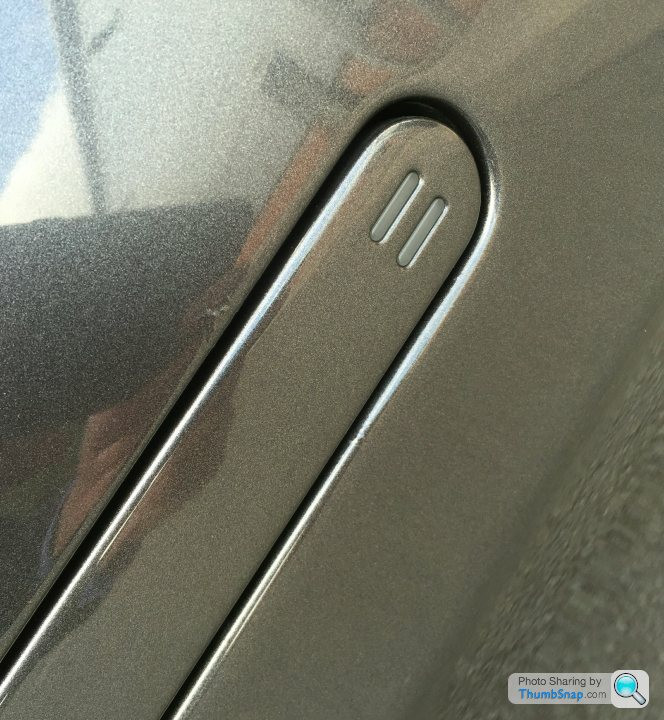 Close-up of paint bubbles on a car body, showing the texture and extent of the damage
Close-up of paint bubbles on a car body, showing the texture and extent of the damage
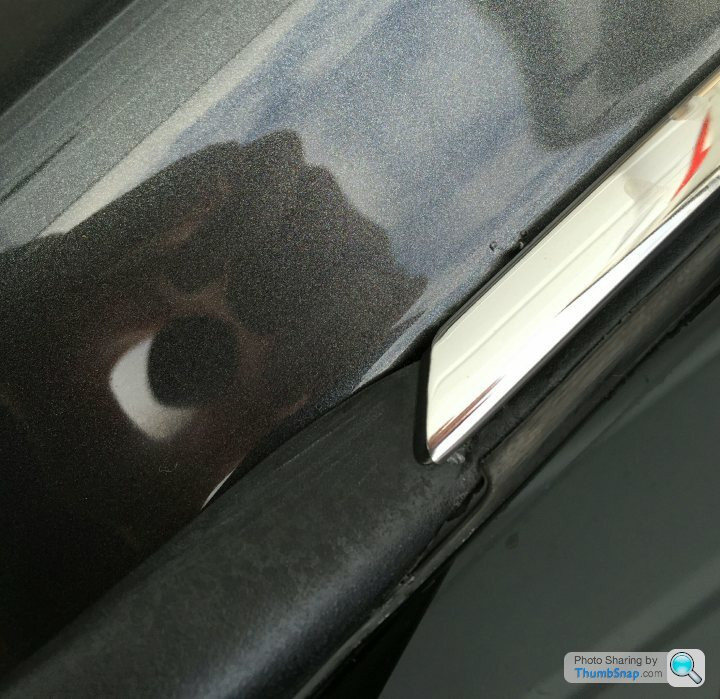 Additional view of bubbling paint on a car, likely caused by rust or moisture underneath the surface
Additional view of bubbling paint on a car, likely caused by rust or moisture underneath the surface
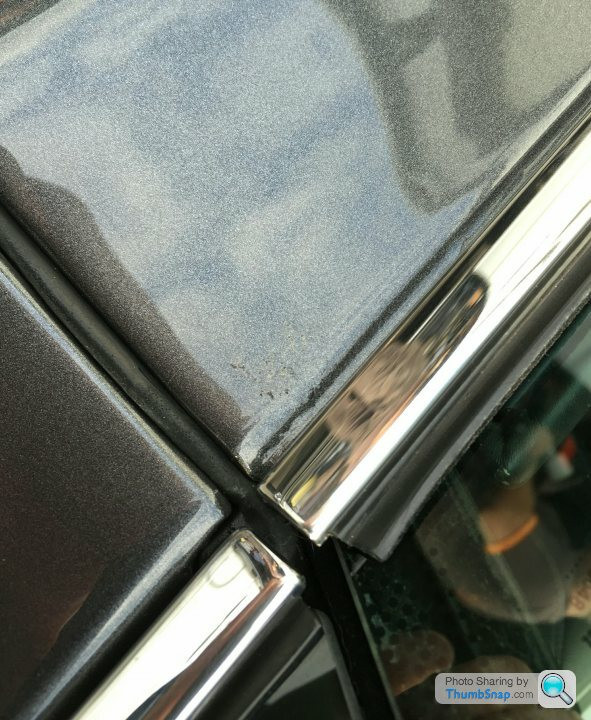 Detail of bubbling paint near a car's trim, suggesting potential issues with sealant or moisture intrusion
Detail of bubbling paint near a car's trim, suggesting potential issues with sealant or moisture intrusion
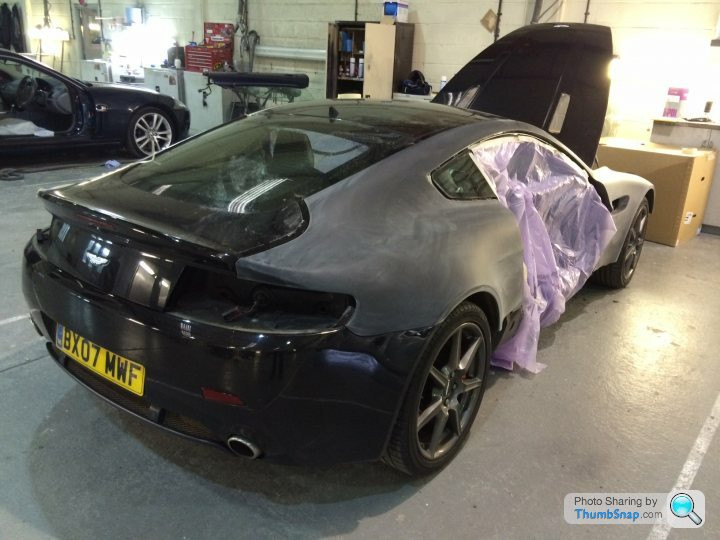 Close-up of car door showing bubbling paint at the bottom edge, indicating possible rust and corrosion
Close-up of car door showing bubbling paint at the bottom edge, indicating possible rust and corrosion
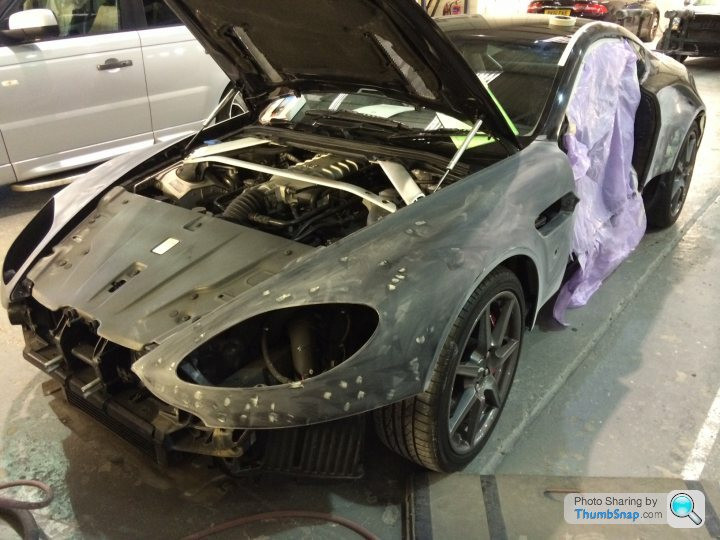 Further detail of car door with bubbling paint near the bottom, highlighting the area affected by potential moisture or rust
Further detail of car door with bubbling paint near the bottom, highlighting the area affected by potential moisture or rust
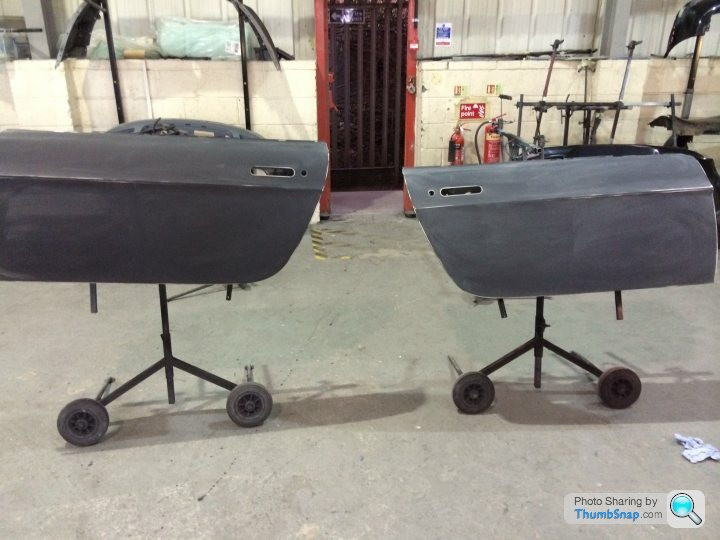 Angle shot of a car door's lower section with visible bubbling paint, underscoring the damage and its potential causes
Angle shot of a car door's lower section with visible bubbling paint, underscoring the damage and its potential causes
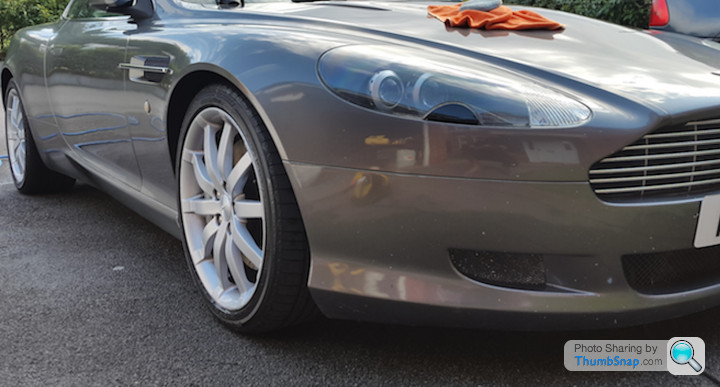 Image showing car bodywork with repaired sills and front bumper, indicating professional bodywork and paint job
Image showing car bodywork with repaired sills and front bumper, indicating professional bodywork and paint job
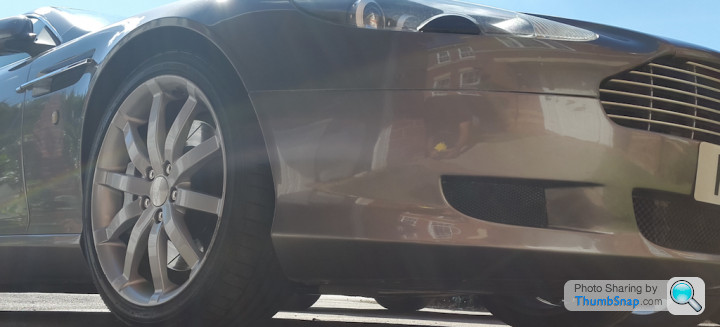 Car bodywork showing a re-sprayed boot lid with a clean finish, demonstrating quality paint restoration
Car bodywork showing a re-sprayed boot lid with a clean finish, demonstrating quality paint restoration
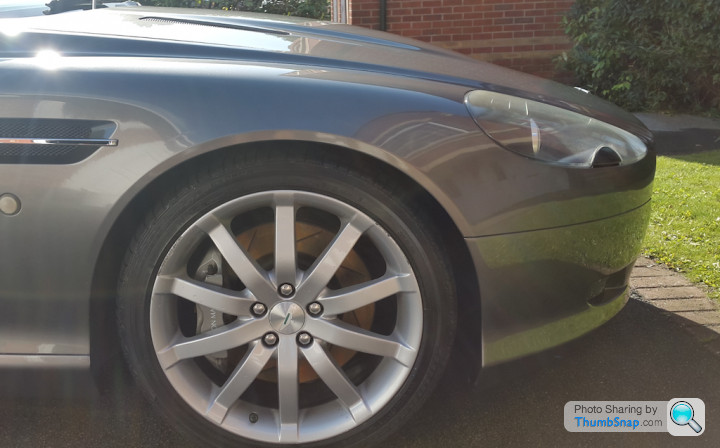 Clean car bodywork displaying a re-sprayed side and rear panels, indicating thorough auto body repair
Clean car bodywork displaying a re-sprayed side and rear panels, indicating thorough auto body repair



